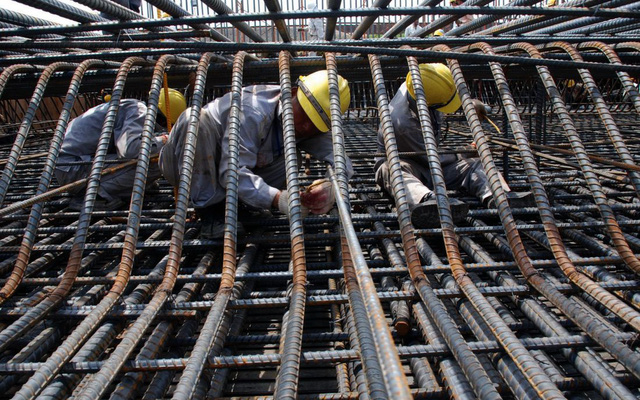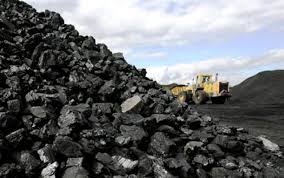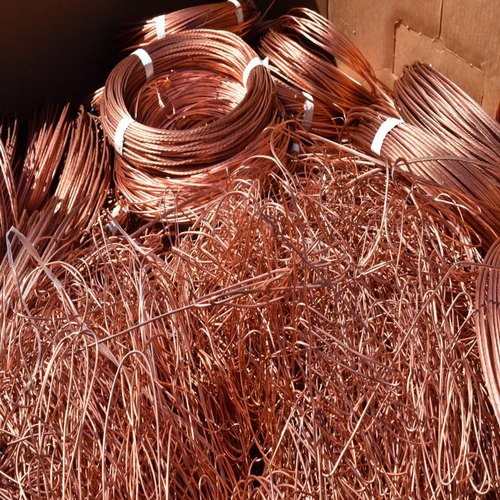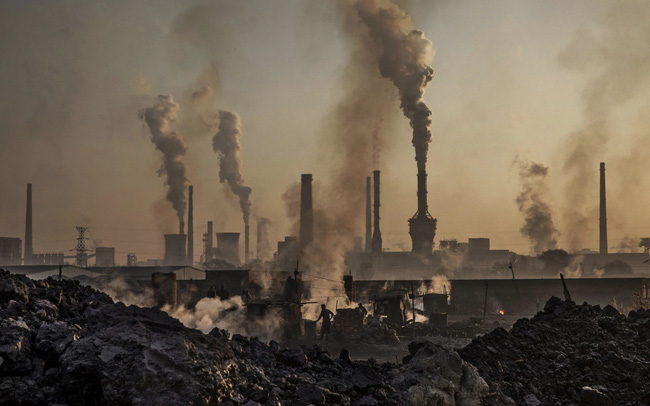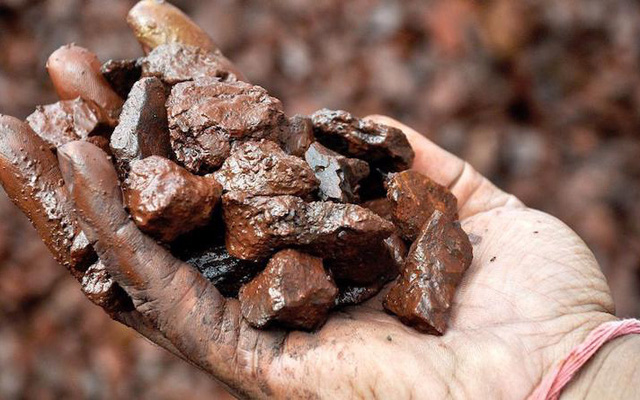Financing for coal power is a hot topic. To date, more than 100 banks, insurers & asset managers and investors globally (including multilateral financial institutions and financial investors) have announced their withdrawal from the financial institutions. coal mining projects and coal power plants. These units can include the world’s leading banks such as World Bank, ADB, Standard Chartered, Maybank, SMBC…
When coal power is no longer cheap
In mid-August 2021, Nikkei Asia reported that the Asian Development Bank and Prudential Insurance Group (UK) are expected to announce an ambitious investment plan to reduce carbon emissions in Asia. at the United Nations COP26 climate conference in November.
The plan calls for the acquisition of existing coal-fired power plants and their decommissioning for 15 years, much earlier than their usual lifespan, which is 30-40 years. HSBC will also join the campaign. Nikkei said it is currently looking to the Philippines, Vietnam and Indonesia, in search of coal-fired power plants that can be purchased for early closure.
At the same time, with the carbon emission reduction targets set by many investors around the world, the construction of new coal power projects will have higher investment costs and the existing plants will have to close. earlier than the deadline.
Financial institutions of Japan and Korea soon moved to tighten loans for coal power. Even China, which is a rare country that maintains financial support for these projects, recently pledged to stop funding new coal power projects abroad, as President Xi Jinping announced. presented at a United Nations conference in September. This, inevitably, will affect new coal power projects in many developing countries including Vietnam.
Difficulty in arranging capital for coal power projects will likely be the main cause of the risk of power shortage due to the delay in the source schedule. According to a study by the Institute of Energy, the current slow-moving power sources in Vietnam are mostly coal power, mainly due to lack of capital, difficulties in arranging capital, delay in equipment delivery, and difficulties in equipment delivery. in compensation and resettlement…
Not only that, the price of coal will soon become a burden. According to Ms. Nguy Thi Khanh – Chairwoman of the Vietnam Sustainable Energy Alliance (VSEA), from the past to now, we still think that coal power is cheap energy. However, the volatility of coal prices in recent years warns of huge risks of economic consequences if coal power continues to develop. Coal prices are actually higher than the 2045 forecast given in the draft Power Master Plan 8. If the share of coal power continues to increase, while coal prices continue to escalate, pressure will be put on power plants. will get bigger and bigger.
In addition to global financial institutions, over the past year, an increasing number of multinational corporations have made commitments to carbon neutral targets due to pressure to reduce greenhouse gas emissions in the region. its supply chains, operations, production and services. With Vietnam aiming to become a modern industrialized country by attracting more large foreign corporations to set up production bases in Vietnam, it is very important to ensure a source of electricity without these units buy to use for their business activities must be sustainable, clean and green.
Power planning 8 still focuses on coal power
Vietnam is operating a total of 21.3 GW of coal power capacity by the end of 2020, contributing 50% of total electricity production nationwide. According to the recent draft Power Plan 8, coal power generation capacity will be increased to 40.9 GW in 2030 and to 50.9 GW in 2035.
Of these approved coal power projects, an estimated 15.8 GW is still unfinanced.
Many experts also said that the Power Plan 8 still focuses a lot on coal power. Le Anh Tuan, former deputy director of the Institute of Climate Change Research at Can Tho University, said that the reduction of about 8,000 MW of renewable energy, while increasing about 3,000 MW of coal power by 2030 as planned as planned. Electricity 8 will create huge economic, environmental and social impacts.
“If we consider the environmental impacts, then it is clear that fossil energy sources will create very bad impacts,” he said, citing coal power plants in the North and Central region. Great lessons about the impact on the environment.
A study by the Center for Research on Energy and Clean Air (CREA) assessing the impact of coal-fired power plants in 10 provinces expected to be supplemented under the draft Power Master Plan 8 calculated that, if 16 projects New coal power (with a total capacity of about 22GW) built and operated according to the draft Power Master Plan 8, economic loss to society due to health costs, reduced labor productivity and life expectancy is estimated at approx. $270 million annually. Over the 30-year life cycle of these projects, the cumulative economic loss after 30 years amounts to $8 billion.
Proposing possible plans
In addition to the amount of renewable energy capacity proposed in the recent draft Power Master Plan 8, the study proposes to build a total of 5.6 GW of wind power and 4.9 GW of solar power by 2045. This will help Vietnam to further limit the use of fossil fuels and reduce electricity costs when renewable electricity does not use fuel and costs are decreasing rapidly, and to reduce emissions for the system. electrical system.
The model also recommends building an additional 8.5GW of flexible gas (ICE) by 2045 to support future wind and solar power as the ICE technology properties are suitable for system balancing and limiting capacity cuts of renewable sources while ensuring stable electricity supply. The construction of a flexible gas-fired power source in the system will also contribute to solving the concern of power shortage in the dry season.

Illustration: Manantiales Behr . Power Plant
The results of the study reveal significant numbers of system cost savings and emission reductions The study demonstrates the benefits of replacing unfinanced coal power projects with a complex that includes including wind power, solar power and flexible gas electricity (ICE):
Firstly, if this option is implemented, the share of renewable energy in output will be increased from 32% to 34% in 2030 and from 41% to 45% in 2045. Second, the system cost. (CAPEX – investment, OPEX – operation) will be reduced through the replacement of approved but unfinanced coal power projects with a renewable energy and flexible gas (ICE) complex. could reach $24 billion by 2045. At the same time, the addition of renewable energy sources to the power system will help reduce CO2 emissions by 15% by 2045.
At the ongoing COP26 conference in Glasgow, the Government of Vietnam has set a target to reduce carbon emissions to net zero by 2050. Therefore, it is time for Vietnam to consider investing in New coal power projects and PDP8 should consider alternatives in case new coal power projects cannot be financed by the construction of more renewable and flexible power sources.
Malin Östman, Wärtsilä’s Director of Market Development & Strategy for Asia & the Middle East, said: “Coal power projects that have not been financed will face many difficulties to be implemented. Countries with planned coal power projects should explore other options for energy security solutions. net zero and our study has shown that renewable energy has the potential to become an affordable and highly reliable source of electricity when there is enough flexibility in the power system.” .
“Continuing to develop about 30 GW of coal power in the period 2021-2045 according to the current draft Power Master Plan VIII may be very risky when more than half of the coal power capacity is planned yet and it is difficult to arrange. financial institutions in the face of commitments to stop funding by countries and financial institutions, which can put Vietnam at risk of power shortages, and put Vietnam in the opposite direction of the shifting trend. green of the world and efforts to achieve the climate goals of the Paris Agreement.
Meanwhile, Vietnam is facing a favorable opportunity to develop clean energy sources with the encouragement and commitment of support from international partners, the community of domestic and foreign investors. Hopefully the Government will make a wise decision to seize that opportunity,” said Ms. Nguyen Thi Hang, Manager of the Fair Energy Transition Program, Green Innovation Development Center (GreenID).
T&G International Joint Stock Company
Address: 352 Hue Street, Le Dai Hanh Ward, Hai Ba Trung District, Hanoi
Hotline: 0345786803
Email: hrm@tginterjsc.com
Website: http://tginternationaljsc.com




